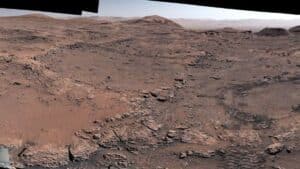China’s orbital supercomputing initiative represents a watershed moment in space technology. The country launched 12 satellites from the Jiuquan Satellite Launch Center in May 2025, marking the first phase of an ambitious project called the Three-Body Computing Constellation. This network aims to create the world’s most powerful space-based computing system, positioning China at the forefront of orbital data processing and artificial intelligence capabilities.
China’s revolutionary orbital computing network
The Three-Body Computing Constellation represents a fundamental shift in space-based data management. Unlike traditional satellites that merely collect information and transmit it to Earth for processing, this Chinese initiative processes complex data directly in orbit. ADA Space, a Chinese aerospace startup, has partnered with the state-backed Zhijiang Laboratory to deploy what will eventually become a network of 2,800 satellites.
Each satellite carries sophisticated AI models with 8 billion parameters. The initial dozen satellites can already perform up to 5 peta operations per second (POPS). When completed, the network is projected to reach an astonishing 1,000 POPS—equivalent to one quintillion operations per second. This computational power rivals or potentially exceeds Earth’s most advanced supercomputers.
Wang Jian, Zhijiang Lab’s director and Chinese Academy of Engineering member, emphasized the importance of bringing AI capabilities to space: “Artificial intelligence should not be absent from space due to a lack of computing power.”
The network utilizes several technological advantages unique to the space environment:
- Natural cooling in the vacuum of space
- Direct access to solar power
- Laser communication links transmitting at 100 gigabits per second
- Shared storage capacity of 30 terabytes per satellite
- Interconnected mesh architecture functioning as a distributed computer
In 2019, Iceland Approved the 4-Day Workweek: Nearly 6 Years Later, All Forecasts by Generation Z Have Come True
At 94, He’s One of Apple’s Biggest Shareholders, and Doctors Can’t Explain How He’s Still Alive-Coca-Cola and McDonald’s Are Part of His Daily Routine
Scientific capabilities beyond pure computing power
The Three-Body Computing Constellation extends far beyond raw computational capacity. These satellites carry multiple scientific instruments designed for diverse applications. According to official statements from ADA Space, the constellation enables real-time Earth observation, precise 3D terrain mapping, and even detection of cosmic X-ray bursts.
One particularly notable satellite contains an X-ray polarization detector specifically designed to capture high-energy cosmic events, including gamma-ray bursts. This represents a significant expansion into astrophysical research alongside the network’s primary AI applications.
The constellation’s capabilities allow for the creation of “digital twins” of Earth’s terrain in real-time. This drastically reduces latency and transmission costs compared to traditional satellite systems, offering valuable insights for various sectors:
| Industry Sector | Potential Applications |
|---|---|
| Agriculture | Crop monitoring, yield prediction, resource optimization |
| Emergency Services | Natural disaster response, search and rescue operations |
| Urban Planning | Infrastructure development, environmental impact assessment |
| National Defense | Strategic surveillance, terrain analysis, threat detection |
It races through the universe at 300,000 km/s - and never runs out of energy
Beneath your feet: an ancient forgotten continent resurfaces in Europe
Global implications and international cooperation
While distinctly Chinese in origin, the project shows signs of broader international ambitions. ADA Space has explicitly stated intentions to cooperate with international partners, particularly countries in the Global South. The company aims to develop what it describes as a “smart, interconnected, low-carbon, globally accessible and sustainable” orbital infrastructure.
The project’s name references The Three-Body Problem, a renowned science fiction novel by Chinese author Liu Cixin that explores gravitational systems and interstellar cooperation. This naming choice appears deliberate, suggesting China’s vision extends beyond national boundaries.
The timing and scale of this initiative are particularly significant. While other space agencies and private companies have tested limited orbital computing capabilities, China’s deployment represents the first operational attempt to construct a computing array of this magnitude. In parallel, former Google CEO Eric Schmidt has proposed similar concepts through investments in California-based Relativity Space.
Chinese officials cite the growing global demand for computational power as a driving factor. By 2030, data centers could consume up to 96 gigawatts globally. By moving these processing capabilities to orbit, China positions itself at the forefront of both space technology and the emerging AI race.







